Politics
Trump’s orders have upended U.S. immigration. What legal routes remain?

Promising the largest deportation effort in U.S. history, President Trump, in his first days in office, has released a dramatic series of executive orders and other policy changes that will reshape the country’s immigration system — and the experience of what it means to live in the U.S. as an immigrant, particularly one who is undocumented.
There are an estimated 13 million to 15 million undocumented immigrants in the U.S., including more than 2.5 million in California.
That includes people who crossed the border illegally, people who overstayed their visas and people who have requested asylum. It does not include people who entered the country under various temporary humanitarian programs, or who have obtained Temporary Protected Status, which gives people the right to live and work in the U.S. temporarily because of disasters or strife in their home countries.
However, many of the people who came to the U.S. using those legal pathways could also be at risk of deportation, because of other actions the Trump administration has taken.
What exactly has the Trump administration done?
Trump has signed multiple executive orders targeting immigration that, as the Migration Policy Institute noted, do one of three things: sharply limit legal pathways for entering the U.S., bolster enforcement efforts to seal off the U.S.-Mexico border or promote aggressive sweeps to round up and deport people living in the U.S. illegally. Some of the orders have already been challenged in court, and advocates said others could be soon.
Among the most consequential orders:
- The president declared a “national emergency” at the southern border, which will enable him to deploy military troops there.
- He moved to end birthright citizenship, which has long been guaranteed by the 14th Amendment. The American Civil Liberties Union and more than 20 states, including California, have sued, arguing the order is unconstitutional. In a ruling issued in one of those cases on Jan. 23, a federal judge temporarily halted the order while the legal challenges play out.
- He suspended the refugee admissions program as of Jan. 27 for at least 90 days. Last fiscal year, the U.S. resettled more than 100,000 refugees, the highest number in three decades.
Has the new administration done anything else that affects immigration?
Yes. Among the significant actions:
- Hours after Trump took office, his new administration shut down the CBP One mobile app. The Biden administration had expanded use of CBP One to create a more orderly process of applying for asylum. Migrants could use the app, once they reached Mexican soil, to schedule appointments with U.S. authorities at legal ports of entry to present their bids for asylum and provide biographical information for screening.
- In a related action, the administration has given Immigration and Customs Enforcement officials the power to quickly deport about 1.4 million immigrants who were granted legal entry to the U.S. for up to two years through two Biden-era programs: migrants who came in through the CBP One program and were granted parole status as they await hearings on their asylum pleas; and migrants fleeing Cuba, Nicaragua, Venezuela and Haiti who were granted temporary parole while seeking asylum.
- In a notice posted Jan. 21, the administration said it would empower immigration authorities to fast-track deportations of people in the country illegally without a judicial hearing. The ACLU has sued to try to halt the plan.
- The Department of Homeland Security has rescinded long-standing guidelines prohibiting immigration agents from making arrests in “sensitive” locations such as schools, hospitals and churches.
- Benjamine Huffman, the acting secretary of the Department of Homeland Security, has declared a “mass influx” of illegal immigrants at the southern border, which authorizes the department to deputize state and local law enforcement officers to conduct immigration enforcement.
- ICE has begun conducting publicized immigration raids in many cities, including New York and Chicago. The administration said it was targeting undocumented people with criminal records. But in a briefing this week, White House Press Secretary Karoline Leavitt said the administration views all undocumented immigrants as criminals, because they have violated immigration laws.
So, what are the numbers? Have more people been deported since Trump took office?
ICE authorities this week have been posting daily figures on the agency’s X account citing the number of undocumented immigrants arrested, including 1,179 on Jan. 27 and 969 on Jan. 28. Axios reported this week that ICE made 3,500 arrests during Trump’s first week in office. During Biden’s final year in office, the arrest number was about 350 a week.
It is too soon to evaluate deportation numbers. On Jan. 27, ICE posted on X that: “In one week, law enforcement officials have removed and returned 7,300 illegal aliens.”
If that pace continues, and ICE removes 7,300 immigrants every week for a year, that would result in the forced removal of more than 350,000 people. That figure would outpace removals during the Biden administration. But during the Obama administration, ICE removals peaked at nearly 410,000 in fiscal year 2012. Obama’s enforcement policies targeted undocumented immigrants with criminal records and people who had recently crossed the border without authorization, according to the Migration Policy Institute, while placing low priority on people with established roots in U.S. communities and without criminal records.
What are the current avenues for legal immigration?
- People who have a close family member who is a U.S. citizen can still apply. But if the Trump administration resurrects travel bans barring people from certain countries from entering the U.S., that could limit applications to certain nationalities.
- People deemed to have valuable skills can apply for temporary or permanent employment visas, although in many cases there are years-long waits for such visas. Employers can petition for temporary work visas for foreign nationals for specific jobs. Permanent work visas are capped at 140,000 per year, a figure that includes the immigrants plus their eligible spouses and minor, unmarried children, according to the American Immigration Council.
- Immigrants from countries with low rates of immigration to the U.S. are eligible for a green-card lottery.
- Visas are still available for parents adopting a child from another country.
What’s going on with Dreamers?
While Trump tried to rescind Deferred Action for Childhood Arrivals, or DACA, during his first administration, he has not yet touched the program this time around.
The Obama-era program grants a renewable work permit and temporary reprieve from deportation to certain people who came to the U.S. as children. An estimated 537,730 people had DACA protection as of September, with the vast majority being from Mexico, according to the Migration Policy Institute.
The legality of the program remains mired in the federal courts.
What are sanctuary policies, and why is the Trump administration targeting them?
There isn’t one clear definition of a sanctuary policy. The term generally applies to policies that limit state and local officials from cooperating with federal authorities on civil immigration enforcement duties.
California’s 2017 sanctuary law, the California Values Act, prohibits state and local law enforcement agencies from investigating, interrogating and arresting people simply for immigration enforcement purposes. The law does not prevent federal authorities from carrying out those enforcement duties in California. And it does allow local police to cooperate with federal immigration officials in limited circumstances, including in cases involving immigrants convicted of certain violent felonies and misdemeanors.
Under L.A.’s sanctuary city law, city employees and city property may not be used to “investigate, cite, arrest, hold, transfer or detain any person” for the purpose of immigration enforcement. An exception is made for law enforcement investigating serious offenses. L.A. Unified’s sanctuary policy prohibits staff from voluntarily cooperating in an immigration enforcement action, including sharing information about a student’s immigration status.
An executive order issued on Trump’s first day in office threatens to withhold federal funds from sanctuary jurisdictions that seek to interfere with federal law enforcement operations. A memo from the Department of Justice, meanwhile, said state and local officials could be investigated and prosecuted for not complying with Trump’s crackdown on immigration enforcement.
California Atty. Gen. Rob Bonta has called the pronouncement “a scare tactic,” and vowed legal action “if the Trump administration’s vague threats turn to illegal action.”
If immigration authorities make mass arrests, does the U.S. have space to detain all the immigrants?
That depends on several factors.
On average, nearly 40,000 people have been locked up in ICE detention centers on a daily basis during fiscal year 2025. There is probably capacity in the system for additional detainees, but how much isn’t entirely clear, according to Eunice Cho, senior staff attorney with the ACLU National Prison Project.
What is clear is that the administration intends to expand the ICE detention footprint. On Wednesday, Trump directed his administration to begin using the U.S. Navy base at Guantanamo Bay, Cuba, for the detention of 30,000 “high priority” immigrants. The military also is allowing ICE to detain undocumented immigrants at Buckley Space Force Base in Colorado, according to multiple news reports.
ICE operates six detention facilities in California, with capacity for nearly 7,200 detainees, and is pressing to expand. Agency officials are looking for space to accommodate 850 to 950 people within two hours of its San Francisco regional field offices, a development first reported by CalMatters.
The agency is also looking to increase detention capacity in Arizona, New Mexico, Washington and Oregon, according to federal documents obtained by CalMatters.
ICE facilities, which are largely run by private prison corporations, have been dogged by allegations of poor medical care and inhumane treatment. A 2019 law that would have banned private immigration facilities in California was overturned by the federal courts.
Times staff writers Kate Linthicum, Brittny Mejia, Andrea Castillo and Rachel Uranga contributed to this report.

Politics
Global Right-Wing Leaders Revel in a Renewed Fight, Supercharged by Trump

To longstanding American allies in Europe, remarks by President Trump and Vice President JD Vance about Ukraine and Germany this month represented one of the gravest tests of the postwar order in decades.
But to a cohort of current and former world leaders who gathered this week at the Conservative Political Action Conference in Maryland, they represented something else: the dawning of a global right-wing resurgence that, thanks to Mr. Trump’s re-election, is on the cusp of irrevocably transforming that order.
“We missed the first American Revolution in 1776,” said Liz Truss, the Conservative member of Parliament who briefly served as Britain’s prime minister. “We want to be a part of the second American Revolution.”
Ms. Truss was one of more than half a dozen political figures from as many countries to make the pilgrimage to CPAC this week in Oxon Hill, Md., just outside Washington. A long-running gathering of American conservatives that helped foment right-wing insurgencies within the G.O.P. during the Tea Party and Trump eras, CPAC has in recent years taken these ambitions global. The conference now serves as a connector of right-wing political movements in the Americas, Europe and Asia that increasingly see themselves as allies in a linked struggle against the institutions and geopolitical norms that have dominated world affairs since World War II.
In the past two weeks, Mr. Trump and his top officials have questioned that order more directly and openly than any U.S. administration of the postwar period.
Marco Rubio, Mr. Trump’s secretary of state, met for more than four hours on Tuesday with Russian officials in Riyadh, Saudi Arabia, to reset the relationship between the two global powers and seek a path to end the war in Ukraine. At the same time, Mr. Trump called the Ukrainian president, Volodymyr Zelensky, a “dictator” and blamed him for Russia’s 2022 invasion of his country.
And the Riyadh meeting came days after Mr. Vance, in a speech at the Munich Security Conference, likened the European Union’s policing of online speech to Soviet censorship. He also met with the leader of Germany’s right-wing Alternative for Germany party, which had long been marginalized for some members’ embrace of neo-Nazi slogans and for its links to a recent coup plot.
Mr. Vance defended his Munich speech at his own CPAC appearance on Thursday, as did a parade of international allies who took the stage after him.
The standard-bearers of right-wing political movements around the world — prime ministers from North Macedonia and Slovakia, opposition leaders from Poland and Spain — welcomed Mr. Trump as a transformational figure in a battle against liberalism that transcended nations and continents.
They cast their domestic enemies — judges, online speech constraints, civil society programs and mainstream news organizations — as part of an international project to suppress traditional values, religion and free markets, and hailed the new American president as an ally in turning the tide against them.
“He’s completely changing the international picture,” Balázs Orbán, the political director for the government of Prime Minister Viktor Orbán of Hungary, who is no relation, said in an interview at the conference.
In his speech on Thursday, Eduardo Bolsonaro, a Brazilian lawmaker and a son of the country’s former president Jair Bolsonaro, who was charged this week with attempting a coup to stay in power after losing the 2022 election, described his country as “a laboratory” that was “being used as a testing ground for the judicial weaponization against conservatives, libertarians and Christians — always under the pretense of protecting democracy.”
In particular, the foreign delegations at CPAC celebrated the effort being led by Elon Musk to eliminate the United States Agency for International Development and the civil society programs it funds around the world.
Such programs have enjoyed broad bipartisan backing for years in the United States, and similar support in the European Union, which has joined the United States in financing independent news media, rule-of-law programs and, more recently, efforts to curb online misinformation around the world. But these efforts have incensed the ascendant right-wing parties, which have often run afoul of them.
Mr. Bolsonaro, in his speech, accused U.S.A.I.D. of “channeling resources into censorship, judicial overreach and political persecution.”
Mr. Musk’s abrupt embrace of these grievances against the American development agency reflects the growing influence of the global right on the American right — a connection commemorated at CPAC when President Javier Milei of Argentina, who has become a celebrity on the American right, bounded onstage to present Mr. Musk with the chain saw he had wielded theatrically during his 2023 presidential campaign.
This year’s CPAC was perhaps the fullest fruition yet of the vision of right-wing solidarity that some in Mr. Trump’s political orbit, most notably his onetime White House adviser Stephen K. Bannon, tried to foment during the first Trump administration.
Mr. Bannon, who spoke at CPAC on Thursday, threatened to fracture the coalition, however, raising his hand briefly at the end of his speech in what appeared to many to be a reference to a Nazi salute — a gesture that recalled a similar salute by Mr. Musk at Mr. Trump’s inauguration rally last month.
Mr. Bannon’s gesture, which he denied was a Nazi reference, prompted Jordan Bardella, the leader of France’s far-right National Rally party, to cancel his planned CPAC speech on Friday. In a statement, he said he had made the decision “immediately” after seeing Mr. Bannon make a “gesture referring to Nazi ideology.”
But another international speaker on the Friday program, the Mexican actor and political activist Eduardo Verástegui, leaned into Mr. Bannon’s provocation, raising his arm in a similar salute at the conclusion of his own speech.
Speaking on Thursday, the British politician Nigel Farage, among the first from abroad to make connections with the right wing of the Republican Party in the Obama years, remarked on how far the right had come since.
“How amazing it is — 13 years ago, I was the only foreign speaker” at CPAC, said Mr. Farage, who was a key figure in the Brexit campaign of 2016, an early victory in the global right-wing resurgence.
Other speakers had followed Mr. Farage’s lead in crusading against the European Parliament and European Union bureaucracy, which they cast as part of the global network of institutions biased against their movement.
“My government was punished for standing up to Brussels,” said Mateusz Morawiecki, the prime minister of Poland from 2017 to 2023, when his right-wing Law and Justice Party was ousted from power by Civic Platform, a center-right party.
Mr. Orbán, the Hungarian official, whose government has been a model to many like-minded political activists in the global right, said right-wing political movements were less naturally predisposed to cooperate than liberal movements. But he argued that increasingly shared interests — blocking immigration, centering Christianity in public life and skepticism of the war in Ukraine — were drawing the disparate movements together.
“It’s complicated, because if you are a national conservative, it means that you want the best for your country, and your country’s national interests can be confrontational with other countries’ national interests,” he said. “But we still have to do it, try to identify the shared points — and now there are many, many points.”
Politics
DOGE takes a chainsaw to federal spending with 7 major victories this week: 'Got to be done'

The Department of Government Efficiency (DOGE) spent another week slashing hundreds of millions in spending by the federal government, while dodging various legal attempts to block its cost-cutting efforts.
Here are some of DOGE’s big wins this week:
1. Judge shoots down request to stop federal worker firings
On Thursday, U.S. District Judge Christopher Cooper, an Obama appointee, shot down a request from several federal labor unions, including the National Treasury Employees Union (NTEU), to pause the mass firings of federal workers by the Trump administration.
NTEU and four other labor unions representing federal employees filed a complaint Feb. 12 challenging the firing of probationary employees and the deferred resignation program, which gives workers the option to agree to work from an office or resign.
EXPERT REVEALS MASSIVE LEVELS OF WASTE DOGE CAN SLASH FROM ENTITLEMENTS, PET PROJECTS: ‘A LOT OF FAT’
Elon Musk’s DOGE claimed victory in several battles this week. (Getty)
Cooper denied the request to stop the firings, saying the court lacked jurisdiction over the unions’ claims.
Instead, Cooper ruled the unions must pursue their challenges through the Federal Service Labor-Management Relations Statute, which provides for administrative review by the Federal Labor Relations Authority.
2. Judge says DOGE can keep digging
DOGE was handed another victory by U.S. District Judge Tanya S. Chutkan, who denied a request to issue a temporary restraining order preventing Musk and DOGE from accessing data systems at the Department of Education, Office of Personnel Management (OPM), Department of Labor, Department of Health and Human Services, Department of Energy, Department of Transportation and Department of Commerce.
The agencies were asking Chutkan to forbid both Musk and DOGE from terminating, furloughing or putting on leave any of their employees.
Chutkin ruled that DOGE can continue to operate as it is now.
The judge also issued a court briefing schedule for plaintiffs and defendants to file motions for discovery, preliminary injunctions and dismissals, which stretches through April 22.

The White House on Wednesday outlined where the Elon Musk-led Department of Government Efficiency dividend checks could go after President Donald Trump floated the idea of giving 20% of savings back to Americans. (Musk: Reuters / Money: iStock / Trump: Getty)
3. Judge allows DOGE access to data on 3 federal agencies
DOGE scored a win in court after a federal judge declined a request to temporarily block Elon Musk’s government efficiency team from accessing sensitive data from at least three federal agencies.
Unions and nonprofits attempted to stop Musk’s DOGE from accessing records at the Departments of Labor, Health and Human Services and the Consumer Financial Protection Bureau.
The efforts were blocked by District Judge John Bates, who wrote in an opinion that the government was likely correct in categorizing DOGE as an agency, thereby allowing it to detail its staff to other government departments.
Musk praised the decision on X with the caption: “LFG,” an abbreviation for “Let’s [expletive] go.”
DEFENSE SECRETARY HEGSETH WORKING WITH DOGE TO CUT THE ‘BS’
4. DOGE finds a nearly untraceable budget line item responsible for $4.7T in payments
Earlier this week, DOGE announced it had discovered an identification code linking U.S. Treasury payments to a budget line item, which accounts for nearly $4.7 trillion in payments, that was oftentimes left blank.
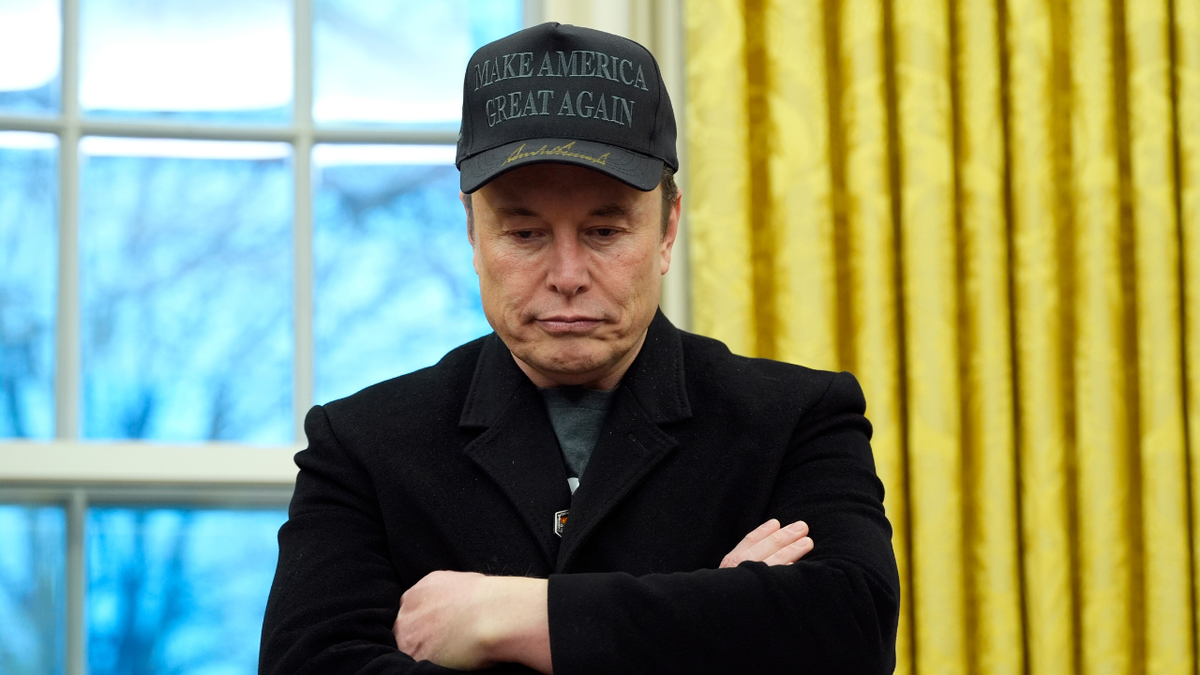
Elon Musk listens as President Donald Trump speaks with reporters in the Oval Office at the White House Feb. 11, 2025, in Washington. (Alex Brandon)
“The Treasury Access Symbol (TAS) is an identification code linking a Treasury payment to a budget line item (standard financial process),” DOGE wrote in a post on X.
“In the Federal Government, the TAS field was optional for ~$4.7 Trillion in payments and was often left blank, making traceability almost impossible. As of Saturday, this is now a required field, increasing insight into where money is actually going.”
The agency thanked the U.S. Treasury for its work in identifying the optional field.
According to the Bureau of the Fiscal Service, which is under the Treasury, TAS codes are used to describe any one of the account identification codes assigned by the Treasury and are also referred to as the “account.”
5. Caesars Palace, MLB stadium, an ice cream truck: DOGE reveals how schools spent billions in COVID relief funds
Schools spent hundreds of billions of COVID relief funds on expenses that had “little” impact on students, such as Las Vegas hotel rooms and the purchase of an ice cream truck, according to the Trump administration’s cost-cutting department.
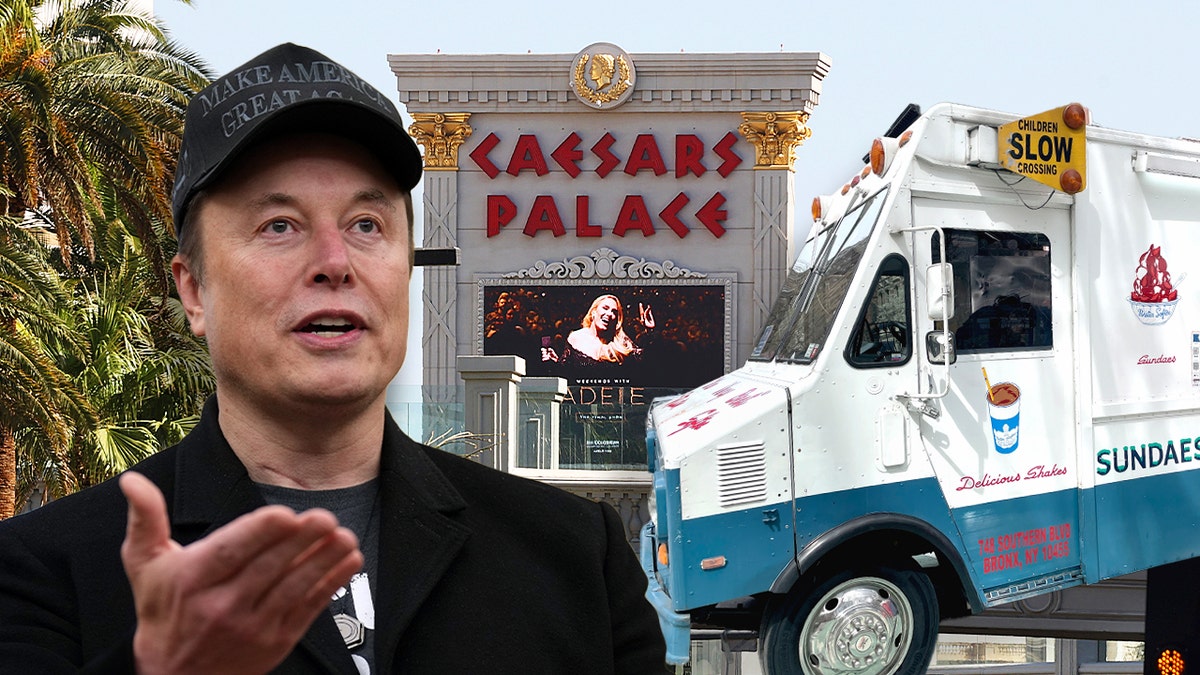
DOGE reveals how COVID relief funds have been spent by schools. (Getty Images)
DOGE revealed Thursday that schools have spent nearly $200 billion in COVID relief funds “with little oversight or impact on students.”
WHITE HOUSE OUTLINES WHERE DOGE SAVINGS COULD GO AFTER TRUMP FLOATS RETURNING 20% TO AMERICANS
Granite Public Schools in Utah spent COVID relief funds on $86,000 in hotel rooms at Caesars Palace, a ritzy Las Vegas Casino, while Santa Ana Unified spent $393,000 to rent a Major League Baseball stadium, according to a report by Parents Defending Education and shared by DOGE.
The cost-cutting department also revealed that schools spent $60,000 in COVID relief funds on swimming pool passes, while a California district used its funds to purchase an ice cream truck.
6. Hegseth working with DOGE to cut the ‘BS’
Secretary of Defense Pete Hegseth is working with DOGE to make cuts within his department, saying he believes it will find waste “not core to our mission.”
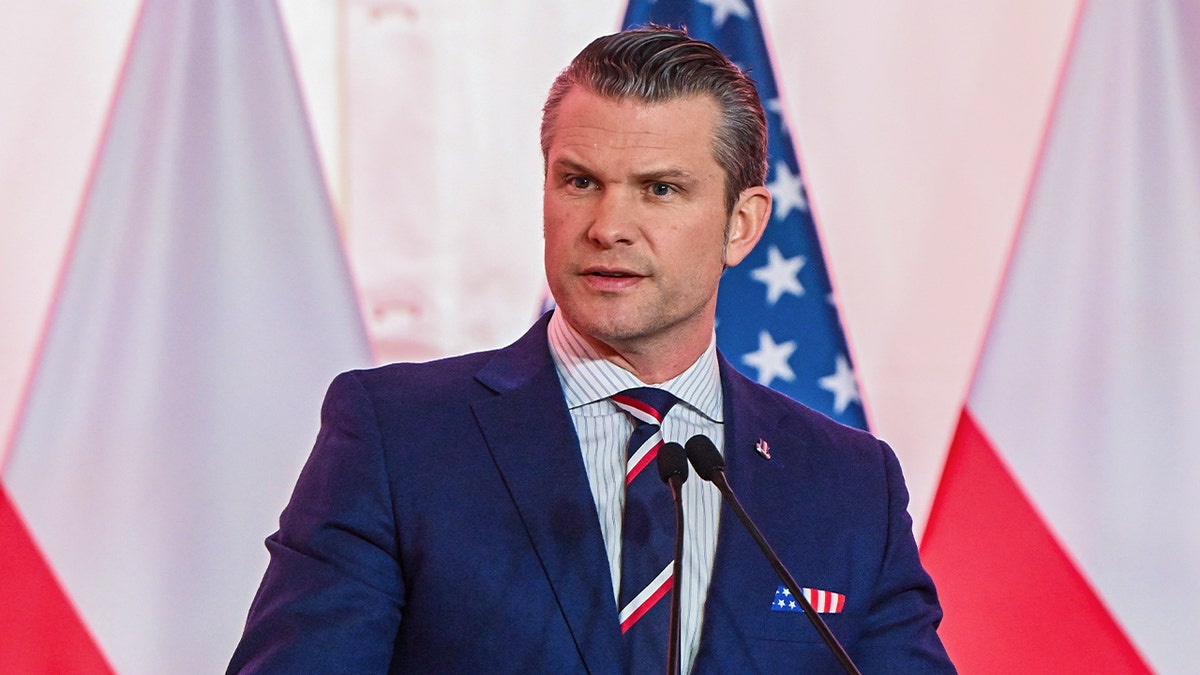
U.S. Secretary of Defense Pete Hegseth delivers a press statement after a meeting at the Ministry of Defense. (Omar Marques)
“They’re here, and we’re welcoming them,” Hegseth said in a recent video released Thursday. “They’re going to have broad access, obviously, with all the safeguards on classification.
“They care just like we do, to find the redundancies and identify the last vestiges of Biden priorities — the DEI, the woke, the climate change B.S., that’s not core to our mission, and we’re going to get rid of it all.”
Hegseth, who said many DOGE workers are veterans, met with Musk’s team and said they have already started their review of the Department of Defense.
7. DOGE uncovers over 4M government credit cards responsible for 90M transactions
DOGE revealed on Tuesday that the U.S. government has more than 4 million active credit cards on its books.
“The US government currently has ~4.6M active credit cards/accounts, which processed ~90M unique transactions for ~$40B of spend[ing] in FY24,” DOGE said in a post on X.
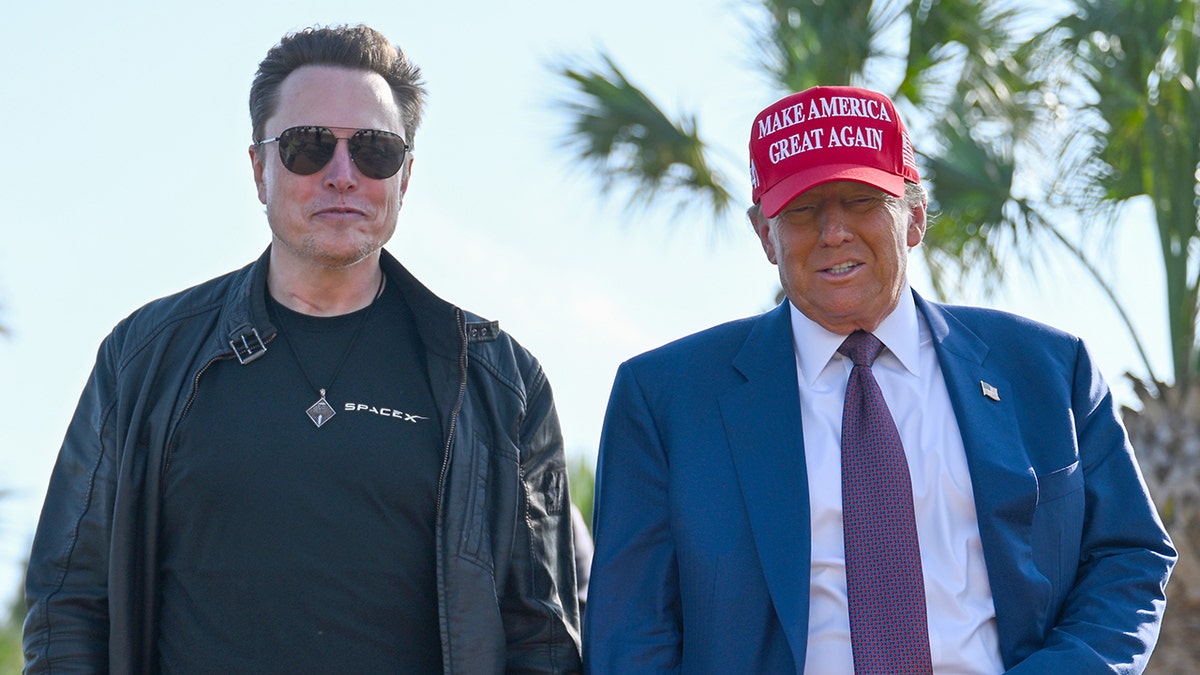
President-elect Donald Trump greets Elon Musk as he arrives to attend a viewing of the launch of the sixth test flight of the SpaceX Starship rocket Nov. 19, 2024, in Brownsville, Texas (Brandon Bell)
The cost-cutting department broke down multiple federal agencies and their credit card use, with the DOD leading the way in both the number of transactions, about 27.2 million, and the number of individual accounts, roughly 2.4 million.
Musk delivered a speech to conservatives Thursday in which he touted the accomplishments of DOGE and, at one point, stood on the stage holding a golden chainsaw given to him by Argentina’s President Javier Milei, symbolizing the cuts being made to government spending, to the delight of the crowd of conservatives at the Conservative Political Action Conference in Maryland.
“We’re fighting Matrix big time here,” Musk said. “It has got to be done.”
Fox News’ Alex Nitzberg, Emma Woodhead, Michael Lee, Greg Wehner, and Michael Dorgan contributed to this report.
Politics
Fresh off meetings with foreign allies, Schiff echoes alarm over Trump-style diplomacy

After days of meetings with European leaders, Israeli officials and other international security experts, Sen. Adam Schiff this week offered a blistering assessment of President Trump’s approach to foreign policy.
In an interview with The Times, the California Democrat accused Trump and other administration officials of abandoning Ukraine and other European allies, bowing to Russian President Vladimir Putin, sidling up to far-right extremists in Germany and framing Gaza in absurdly cruel terms as a future U.S.-owned resort space, purged entirely of Palestinians.
And he said he was echoing those concerns from a host of others he met during a bipartisan congressional trip to both Munich and Israel in recent days, including some of the nation’s most steadfast European allies.
“They’re terrified. They see a president who is betraying a Democratic ally at war, who is suddenly blaming Ukraine for its own invasion by the Kremlin dictator, who is casting doubt on the legitimacy of [Ukrainian President Volodymyr] Zelensky’s leadership in Ukraine, and who is essentially a mouthpiece for the Kremlin,” Schiff said. “They’re flabbergasted. I think they believe that the president is not just an unreliable partner, but a hostile partner.”
Schiff said Republican members of Congress on the same trip shared some of those views and voiced them in closed-door meetings. He said they told Zelensky the U.S. still has Ukraine’s back, and Israeli Prime Minister Benjamin Netanyahu that Trump’s idea for Gaza was “a complete nonstarter,” with no support in the Senate for “investing American boots on the ground or resources into a U.S. occupation of Gaza or U.S. reconstruction of Gaza.”
Schiff’s assessment followed a stunning stretch of U.S. foreign diplomacy in the last two weeks, during which Trump and other top administration officials — including Vice President JD Vance, Secretary of Defense Pete Hegseth and Secretary of State Marco Rubio — have repeatedly shocked the world with their pronouncements about the U.S. role in foreign relations moving forward.
In his first trip to NATO headquarters in Brussels on Feb. 12, Hegseth suggested the U.S. could no longer guarantee the safety of Europe and that Ukraine would have to give up massive concessions — including territory — to end Russia’s war against it.
Days later at the Munich Security Conference, Vance said little about Russia’s war, lectured European allies on what it means to be a democracy and met with leaders of Germany’s far-right party just days before an election there. And Rubio met with Russian Foreign Minister Sergei Lavrov to begin negotiations without any involvement from Ukraine.
Meanwhile, Trump praised Putin and repeatedly denigrated Zelensky. He blamed Ukraine for Russia’s invasion and called Zelensky a “dictator” who is ripping off the U.S. and who has “no cards to play” in ongoing negotiations with Russia.
He also kept suggesting Gaza could be a U.S.-owned “Riviera of the Middle East,” among other outlandish foreign policy positions — such as that Canada should be turned into the 51st U.S. state.
Several U.S. foreign policy experts said the administration’s actions, if taken at face value, reverse longstanding U.S. policy and break with diplomatic norms in massive and important ways.
Robert English, an expert on Russian and post-Soviet politics and director of Central European Studies at USC, called the administration’s moves on the international stage the “most upsetting rupture” in U.S. transatlantic relations since World War II and the creation of the North Atlantic Treaty Organization, and a “sharp turn” by the U.S. with still unclear results.
California Sen. Adam Schiff had harsh words for the Trump administration after he attended the Munich Security Conference.
(Tom Williams / CQ-Roll Call Inc. via Getty Images)
But he and others also left open another possibility: The wave of startling pronouncements could represent a negotiating tactic to shock allies and opponents into making more moderate concessions to the U.S.
Benjamin Radd, a political scientist and senior fellow at UCLA’s Burkle Center for International Relations, said he believes Trump’s “bombastic positions” are indeed a tactic — and one that has worked.
As one example, he pointed to a Friday summit hurriedly called in the Saudi capital of Riyadh among leaders from Egypt, Jordan and other Gulf Arab states to discuss a path forward for Gaza, after Rubio suggested Trump’s remarks about the territory were in part a challenge to Arab nations to come up with their own plan.
However, Trump also has shown a propensity to follow through with outlandish ideas when nobody stands in his way, Radd said, so even his most wild pronouncements can’t be dismissed out of hand.
“It’s trolling until it isn’t,” Radd said. “If you do not get in front of it, he’ll be like, ‘Wait a minute, there’s nobody to actually stop me.’”
Schiff said he views Trump as irresponsible, dangerous and willing to go as far as others — both in the U.S and abroad — will let him. And he said it will be incredibly important for those who understand the important role the U.S. plays in maintaining world order to reestablish some guardrails and block his worst impulses.
Whether that will happen is unclear, he and the experts agreed.
Part of what will determine the administration’s next moves, English said, will be Europe’s ability to maintain a united front, including in its support for Ukraine.
“If he’s able to drive a wedge into European Union solidarity, then their resolve will fall apart,” he said.
Within the U.S., Schiff said, much of the work will fall to Republicans. Those in the Senate “clearly made a decision collectively” that they were not going to stand in the way of Trump’s Cabinet nominations, he said, but whether they will bend completely to his will on foreign affairs remains to be seen.
If they aren’t willing to stand up to Trump, Schiff said, “their own institution will be destroyed” and they “might as well go home, because we won’t be doing our jobs.” If they are willing to make a stand, there is plenty of work to do, he added.
Schiff said he couldn’t “get into the specifics” of the conversation he and other senators had with Zelensky, but that it was “fair to say” that Zelensky “was concerned about the U.S. commitment to Ukraine, to our fellow democracies and allies,” and “that, if not stopped in Ukraine, that Russia had territorial ambitions against our NATO allies.”
Zelensky also “raised concerns about being pressed on things like mineral rights without guarantees of our support for Ukraine’s sovereignty and territorial integrity, without security guarantees really of any kind,” Schiff said.
Senators had expressed bipartisan support for Ukraine and Zelensky, he said, and now it’s time they prove it. Schiff said senators still have power to isolate Trump in his criticisms of Ukraine, but have to go “beyond rhetorical support” for Ukraine and affirm it through votes ahead.
“I sure as hell hope they stand up to him for the sake of our country and our allies, our standing in the world, the whole international rules-based order we’ve had since World War II,” Schiff said.
Schiff said others in Munich, including NATO leaders, raised concerns with him about “how many people will suffer” and how the U.S. is “abandoning the field to the likes of China” by closing the U.S. Agency for International Development, which Trump and his billionaire advisor Elon Musk have sought to shutter.
U.S. officials must also push back against that effort, and make it clear to Trump that the agency does important work abroad that serves U.S. interests and must continue.
In Israel, Schiff said he and a bipartisan group of colleagues made clear to Netanyahu that Trump’s proposal for Gaza was unrealistic. They should be making the same clear publicly, he said — to force the administration to take a more responsible position that adheres to international law and protects the rights of Palestinians.
Schiff said he personally told Netanyahu and other Israeli leaders that a two-state solution must still be worked out for the long-term stability of the region and of Israel itself.
“I hope that ultimately it becomes a debate over the attributes of a Palestinian state, rather than whether one will exist,” he said.
The U.S. can remain a leader and a force for good, Schiff said — but it won’t be via Trump’s shock-and-awe approach, either overseas or domestically. And he urged people to step up and play their part in demanding a different path.
“We’re all going to have an important role to play now and over the next four years in the preservation of our democracy,” Schiff said. “It’s going to require those of us in office to be pushing back with every tool we have. It’s going to require the courts to play their historic role. But it’s going to require ordinary citizens also to speak out, to demonstrate — to not let the country go quietly into some kind of one-man rule.”
-

 Education1 week ago
Education1 week agoPhiladelphia Closes Schools for Eagles’ Super Bowl Parade
-

 Culture1 week ago
Culture1 week agoChampions League: Man City have Madrid mountain to climb, are PSG better minus Mbappe?
-

 Education1 week ago
Education1 week agoHow Schools Are Responding to Trump’s D.E.I. Orders
-

 Education1 week ago
Education1 week agoCovid Learning Losses
-

 Politics1 week ago
Politics1 week agoTrump supporting California sheriff to launch GOP run for governor in race to succeed Newsom: sources
-

 News1 week ago
News1 week agoDonald Trump opens the door to Vladimir Putin’s grandest ambitions
-

 News1 week ago
News1 week agoImmigration poll shows growing support for restrictions, but deep divisions remain
-
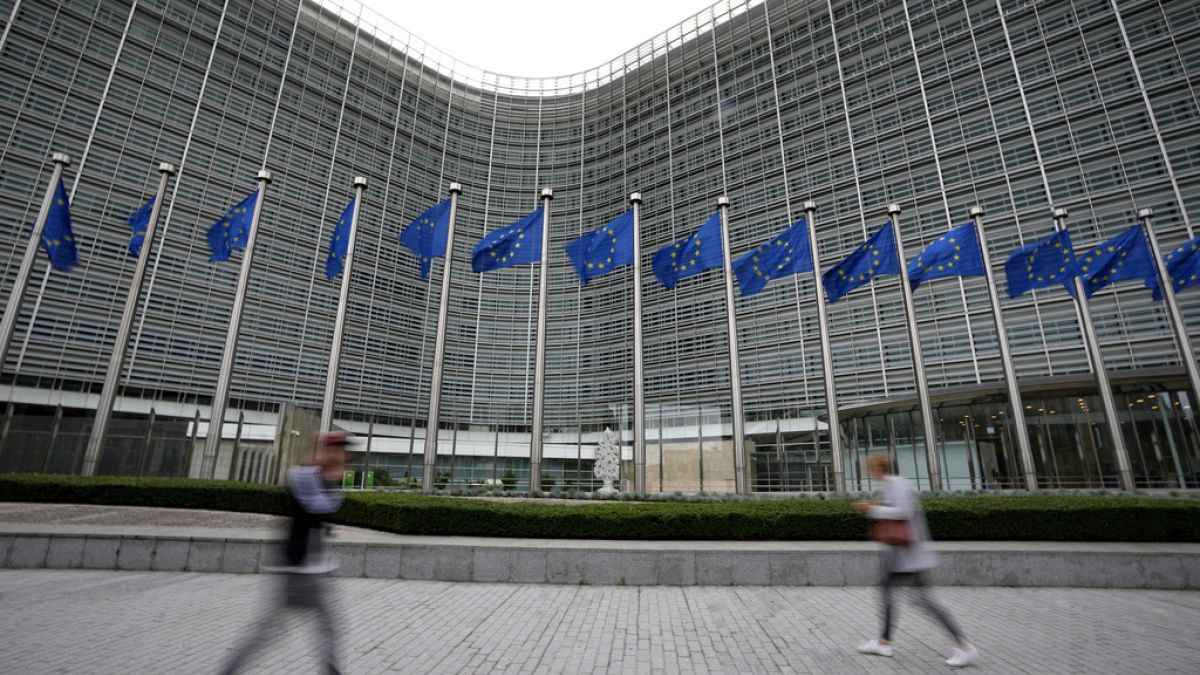
 World1 week ago
World1 week agoEU Commission promises 'firm, immediate' reaction to new US tariffs














